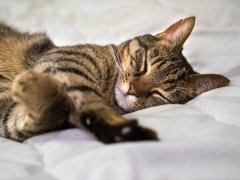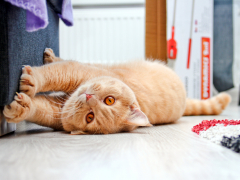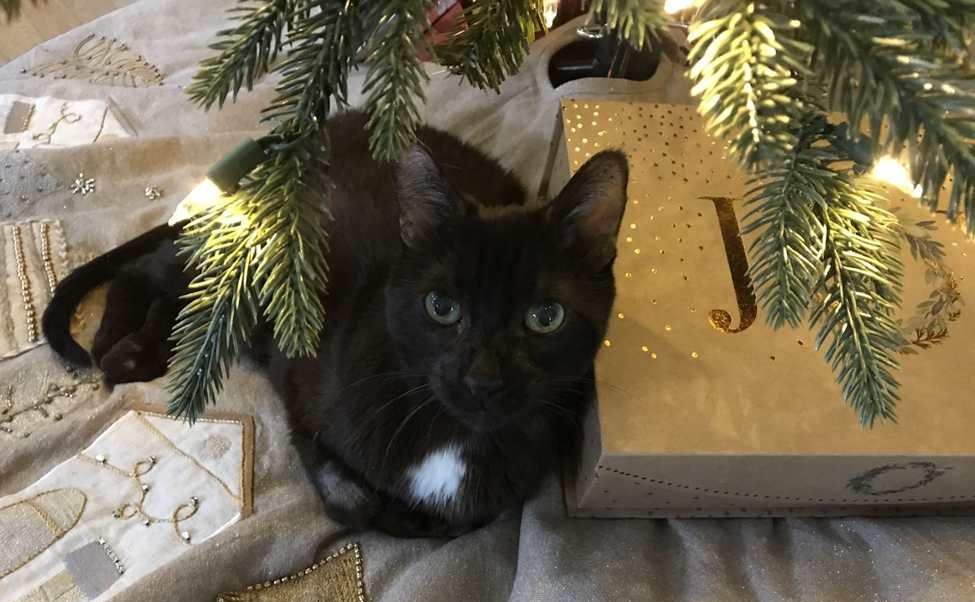
Taylor Le / Cats.com
It’s fun to deck the halls with festive plants and flowers during the holidays. Unfortunately, some of these decorations are on the naughty list—because they are not pet-friendly. If you live with cats, you need to know which holiday plants are toxic for cats so you can keep your home safe.
“When it comes to holiday plants and flowers, there are a few that can be dangerous for our feline friends,” said veterinarian Lindsay Butzer, DVM, of the Clint Moore Animal Hospital in Boca Raton, Florida. “Some holiday plants and flowers may not be highly toxic to cats, but they can still cause irritation or stomach upset if ingested.”
Plants and flowers to keep away from cats this holiday season include:
1. Amaryllis
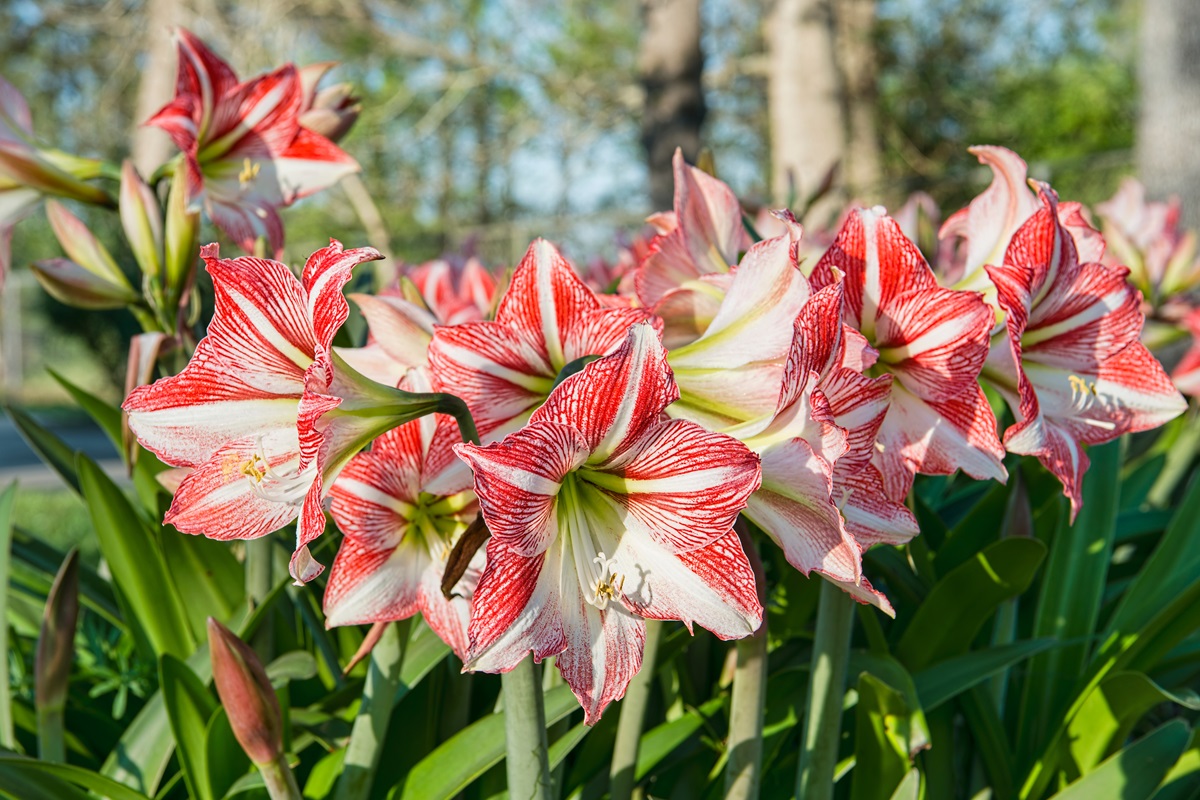
Alkaloids present in the amaryllis are dangerous for cats. Bonnie Taylor Barry / Shutterstock.com
The festive amaryllis is popular around the holiday. There is a beautiful red variety and even a red and white variety known as the candy cane amaryllis. Although the amaryllis is also known by the names Aztec lily, orchid lily, and naked lily, it is not a true lily, which is the deadliest plant species for cats. Even so, alkaloids present in the amaryllis are dangerous for cats.
The alkaloids are least potent in the leaves, so chewing on a few leaves might only cause mild stomach upset like vomiting or diarrhea. However, ingesting many leaves or chewing on a bulb can cause more serious effects, including low blood pressure, weakness, tremors, and seizures.
2. Christmas Cactus
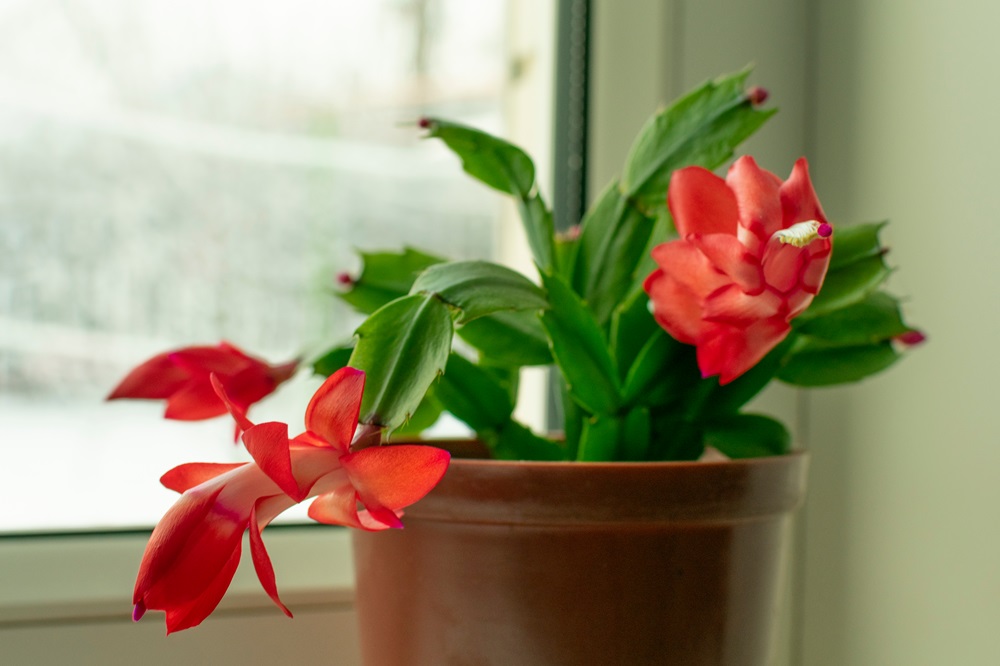
The Christmas cactus can cause GI irritation for cats. axeiz / Shutterstock.com
As you might suspect from the name, the Christmas cactus starts blooming in early winter, making it a popular holiday plant. There’s even a pretty red and white variety sold as a candy cane Christmas cactus. Christmas cactus can cause GI irritation from leaf ingestion, leading to vomiting and diarrhea. Signs typically resolve within a few hours, though persistent irritation can require veterinary intervention.
3. Christmas Rose
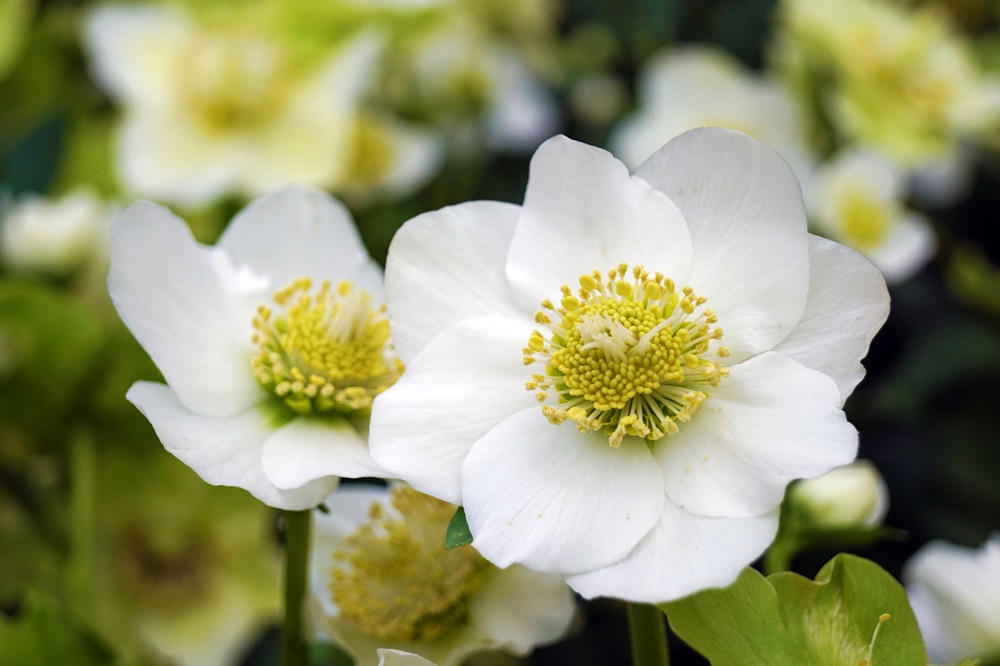
Hellebore sap and cardiac glycosides are dangerous for cats. Natalia van D / Shutterstock.com
The Christmas rose, also known by the names hellebore or Easter rose, contains saps that can cause drooling, vomiting, and diarrhea, which can sometimes appear bloody. Even more serious, cardiac glycosides can cause electrolyte imbalances, heart rate and heart rhythm problems, and even hallucinations. These effects can cause serious problems for cats, including death.
4. Christmas Trees
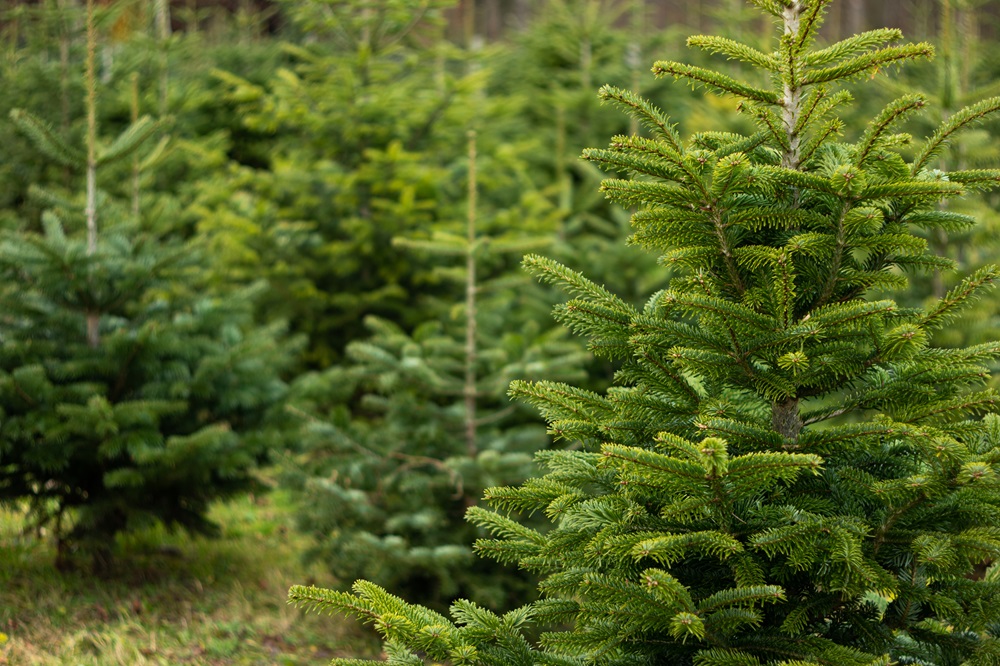
Evergreen sap and needles cause irritation and injury in cats. Octavian Lazar / Shutterstock.com
This one might come as a surprise, but pine trees contain irritating compounds that can cause drooling or vomiting in cats. Common types of Christmas trees include firs, pine, and spruce. The resin, or sap, from pines and firs is toxic to cats. This includes drinking water from the tree or licking sap off of their fur.
Dr. Butzer also points out that the sharp pine needles from Christmas trees can cause irritation and injury if a cat chews or swallows them. Ingesting small amounts of sap or needles can cause GI distress like vomiting, cramping, drooling, and diarrhea. Ingesting larger amounts can cause kidney and liver damage.
5. Cyclamen
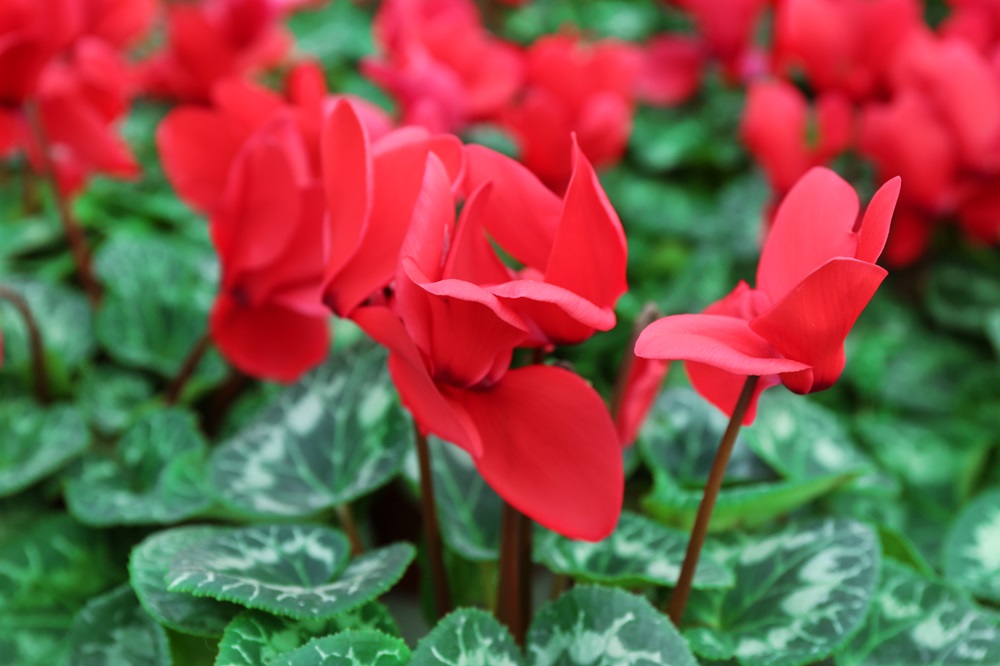
Cyclamen leaves and flowers can cause GI and heart problems in cats. Africa Studio / Shutterstock.com
This plant is commonly found during the winter months because it tends to bloom around Christmas. Cyclamen contains saponins, substances that can cause vomiting and diarrhea in cats. Nibbling on cyclamen leaves and flowers generally causes mild to moderate stomach upset. However, eating any part of the roots or tuber can be very serious for cats, causing abnormal heart rhythms and convulsions.
6. Holly

Holly berries and leaves cause GI problems in cats. Nnattalli / Shutterstock.com
The holly plant is a traditional holiday decoration. Unfortunately for cats, holly contains irritating saps called saponins. Holly berries are the most toxic part of the plant—ingesting them can cause vomiting, diarrhea, and abdominal pain. Usually, pets experience mild signs and recover well at home. Some pets with more persistent or severe signs may require veterinary attention to help correct and prevent dehydration.
7. Lilies
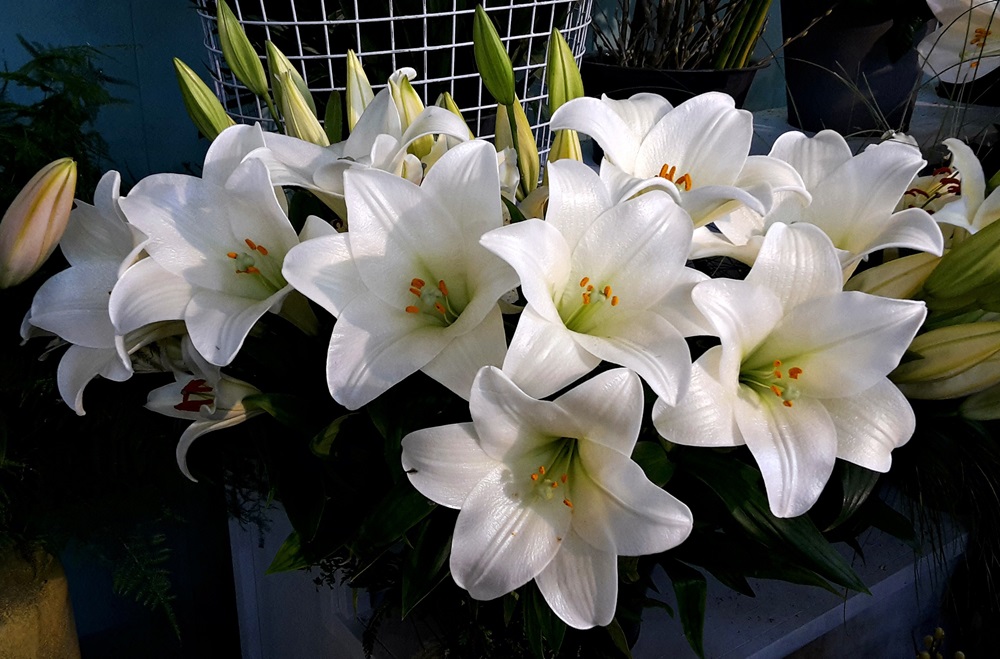
Lilies are the most dangerous flowers for cats. Gabriela Beres / Shutterstock.com
These elegant flowers pop up for many holidays, but unfortunately, lilies are the deadliest of all flowers for cats. True lilies in the genus Lilium include Asiatic lilies, Daylilies, Easter lilies, Japanese show lilies, Red lilies, Rubrum, Stargazer lilies, tiger lilies, Western lilies, and Wood lilies.
Any exposure to lilies—such as nibbling the leaves, sniffing the pollen, nuzzling the flowers, or drinking water from the vase—can cause sudden kidney failure and death. Keep these plants out of your home entirely. If your cat goes outdoors, keep them out of your garden as well. And if you are gifting lilies to a loved one, make sure they do not have a cat.
8. Mistletoe
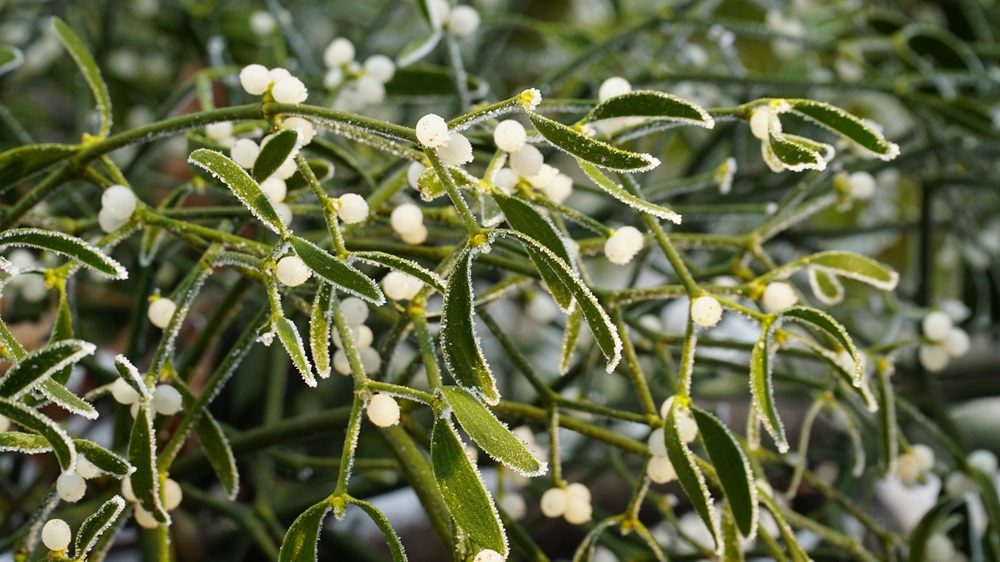
Both the red and white varieties of mistletoe are toxic for cats. Nellia2 / Shutterstock.com
Hanging mistletoe is a longstanding holiday tradition, but all parts of the American mistletoe plant are toxic to cats. Nibbling on leaves or berries might only cause mild stomach upset, but if cats consume larger amounts of mistletoe, it can cause dangerous changes in blood pressure and heart rate. It’s a good thing artificial mistletoe is just as pretty as the real thing.
9. Poinsettias
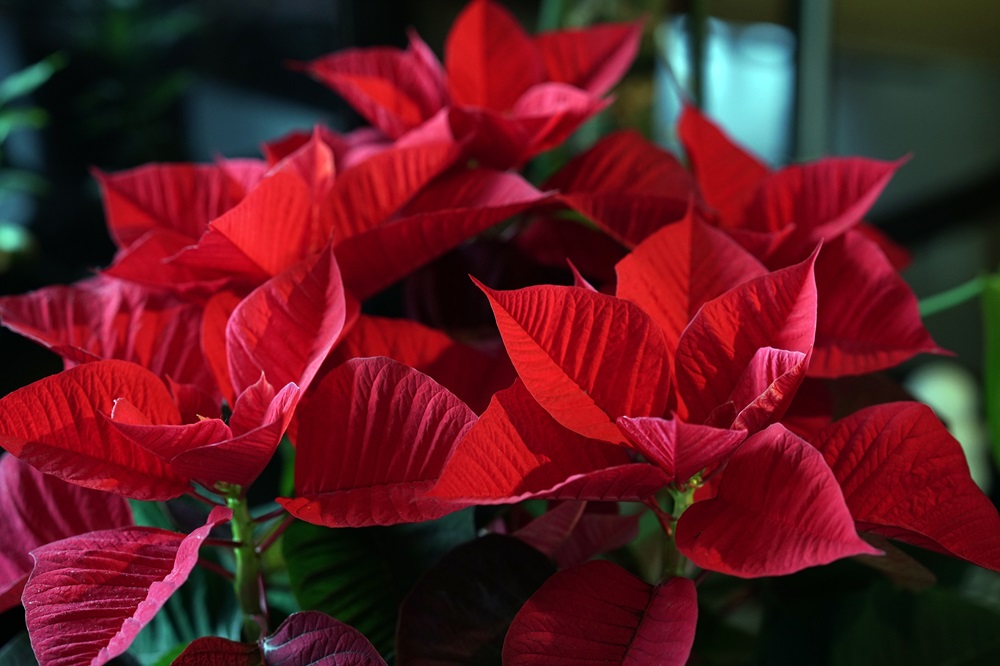
Poinsettia plants cause irritation to the mouth and gastrointestinal upset. Jekatarinka / Shutterstock.com
Poinsettias have a reputation for being deadly to pets. In reality, poinsettias are rarely poisonous to cats. However, the milky sap found inside poinsettia plants causes irritation to the mouth and gastrointestinal upset, so keep these plants away from your cats. Avoid getting them for the indoors, garden, or gifting them to friends with cats.
Protect Your Cat From Toxic Plants
Dr. Butzer offers these tips to keep your curious cat safe from plants and flowers this holiday season:
- Choose pet-safe artificial plants or flowers instead of real ones. (Unless your kitty likes to chomp on those too.)
- Use citrus scents to deter cats by placing orange peels or citrus sprays near plants.
- Designate a safe room or area with no plants or flowers where your cat can relax and play.
- Supervise your cat when they are around holiday plants.
- Distract your cat with plenty of toys and interactive play to keep them entertained and less likely to investigate.
What To Do if Your Cat Ingests a Toxic Flower or Plant
If you know or suspect that your cat has gotten into a dangerous plant, first get the plant away from your cat and put it somewhere out of reach. Symptoms of exposure may include drooling, vomiting, diarrhea, breathing issues, shaking or tremors, dizziness, or low energy. If your cat is exhibiting any of those behaviors, call your veterinarian or reach out to an emergency veterinary hospital immediately.
If you know the type of plant, let your vet know. If you’re not sure, take a picture of it or bring it with you to the clinic. You can also call ASPCA Animal Poison Control (+1 888-426-4435) or the Pet Poison Helpline (+1 855-764-7661) seven days a week, 24 hours a day. Consultation fees may apply.
-
Lynn M. Milewski BS, Safdar a. Khan, DVM, PhD, DABVT. An overview of potentially life-threatening poisonous plants in dogs and cats. Journal of Veterinary Emergency and Critical Care. 2006;16:25-33.
-
Cooke A. Are Christmas trees toxic to cats? Falls Village Vet Hospital. Published November 16, 2020.
-
How to spot which lilies are dangerous to cats & plan treatment. ASPCApro. Published March 21, 2023.
 Fact checked by
Fact checked by

